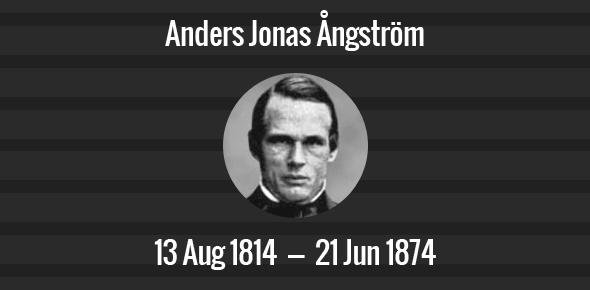By looking at its light, he discovered the substances that make up the sun: Who is Anders Jonas Ângström?
If we can easily understand what elements very distant planets are made of, it is thanks to Anders Jonas Ângström.

(1814-1874) Swedish physicist and astronomer. It laid the foundations of spectral analysis and was named after the unit used in the measurement of very short wavelengths. He was born on 13 August 1814 in the city of Lödgö. He received his doctorate in physics from Uppsala University in 1839; He was appointed as a lecturer at the same university and as a rector between 1870 and 1871. In addition to his studies at the university, he conducted research at the Uppsala Observatory starting in 1843. He was elected a Fellow of the Royal Academy in Uppsala in 1867, and of the Royal Society in London in 1870. He was awarded the Rumford Medal in 1872. He died in Uppsala on June 21, 1874.
Ângström's work has focused on heat conduction and spectroscopy. He developed a measuring instrument while examining the thermal conductivity, and revealed that there was a direct correlation between the thermal conductivity of materials and their electrical conductivity. He announced his first work on spectroscopy in 1853. In this study, in which he examined the spectral lines created by the electric spark emitted by the electrodes in the gas, he showed that the lines changed according to the material of the electrode and the type of gas. Determining the boundaries of the visible spectrum, Angström found that the visible rays emitted and absorbed by incandescent gases are of the same wavelength.
Meanwhile, Kirchhoff, who generalized this finding to all objects with the radiation law named after him, examined the solar spectrum in 1859 and determined that the black lines previously found by the German physicist Fraunhofer were caused by the light absorption of some of the elements in the Sun's chemical structure. Moving in this way, Ângström found in 1861 that certain lines in the solar spectrum were caused by the radiation of hydrogen. Continuing his research, he discovered the presence of manganese, titanium, and aluminum elements in the Sun. His map of the Sun, published in 1868, gave a spectral analysis of the Sun with an error of only about 0.013%. This map, which remained the most reliable study for twenty years, also included the location and analysis of about a thousand Fraunhofer lines (black lines). Ângström collected all his findings about the Sun in a book that he published a year later.
Ângström, who also found the birefringence feature of crystals during his research on light, studied the spectra of some simple gases, and researched subjects such as the thermal conductivity of the human body, the heat, and magnetism of the Earth. Halley tried to determine the orbit of Comet. Ângström, whose importance was understood a little late due to his timid personality and his works in the Swedish language, attracted great attention later with his spectral analysis method and his work in astronomy, and it is called a unit of 10 cm (one hundred millionth of an inch) used to measure very short wavelengths in the light spectrum. given.
Angström's son was also a physicist. Johan Ângström (1857-1910), who rose to a professorship at Uppsala University, conducted studies on the heat emitted by the Sun and its absorption by the Earth's atmosphere. In 1893, he developed a pyrheliometer, known by his name, to measure solar energy. He also built an instrument in 1895 that could photograph the rays of the girl in the spectrum.
